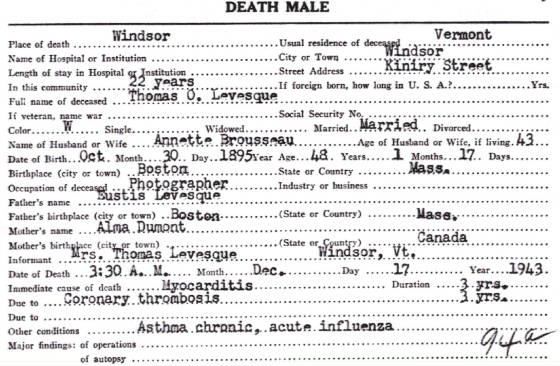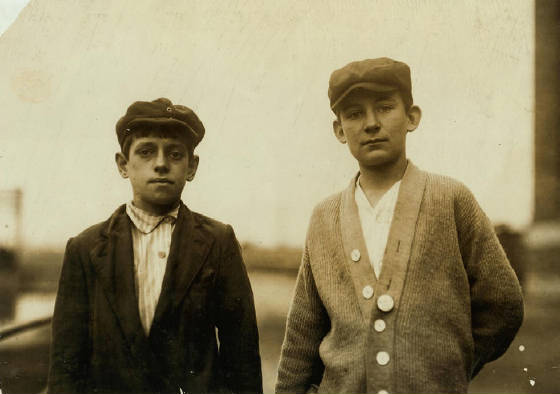
Lewis Hine caption: Smallest boy is Thomas Losesque, 82 Margin Street. Other is Wilfred Valliere, 79 Margin Street, probably 14. Both work in mill room at Wood Mill. Location: Lawrence, Massachusetts, September 1911.
“He played the violin. He would play old French songs. One of my sisters also played the violin, and one of my brothers played the guitar, so they would have jam sessions.” -Thomas G. Levesque, son of Thomas O. Levesque
In his encounters with child laborers, Lewis Hine usually pulled a tiny notebook from his pocket and hurriedly jotted down their names, ages, and sometimes their addresses. He had trouble spelling names, especially those of French Canadians and Eastern Europeans. My research confirmed that “Losesque” was Levesque.
Thomas Octave Levesque was born in Boston on October 30, 1895 (some records say the 29th or 31st). His father, Eustache Levesque, came to the US from Quebec in 1887, and settled in Boston. He married Quebec native Alma Dumont in 1894. By 1900, they were living in a rented apartment in Lawrence, at 366 Market Street. Eustache was a bottler of soda beverages.
Thomas was the second of eight children. By 1910, he and his family had moved to an apartment at 10 Perkins Street; but according to Hine’s caption, they had moved to 82 Margin Street by September 1911. Eustache continued his bottling business. In 1912, Thomas’s mother died of kidney failure. She was 39 years old. That was the year of the Bread & Roses Strike.
Thomas registered for the draft in 1917, and stated that he was working as a shuttle maker for the Sprague Bobbin and Shuttling Company in Lawrence. On June 17, 1919, he married Annette Brousseau, who had entered the US from Quebec the previous year. They rented an apartment at 61 Water Street. He commuted by train to a job in Boston, working as an assistant to a commercial photographer.
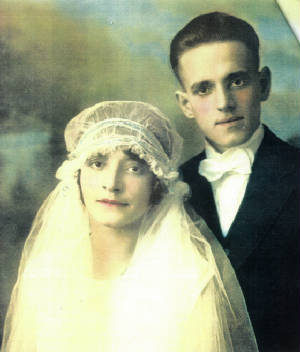
Shortly after, he bought a photography studio in Windsor, Vermont, and the couple rented a small apartment in a working-class neighborhood in the town called “Little Warsaw.” A report by the Vermont Historical Society, published in 1993, described the neighborhood, built just after WWI, as follows:
“…forty-six tenements, and more than forty hastily built hideous looking shanties without adequate health conveniences or electrical lights…”
The Levesques lived there for about six years, and then bought a small house on Kiniry Street, about a mile from the center of town. By 1930, they had five children. Thomas continued to run his photography studio, until his untimely death in 1943. I located his son, Thomas G. Levesque, who still lives in the homestead on Kiniry Street.
Edited interview with Thomas G. Levesque (TL), son of Thomas O. Levesque. Interview conducted by Joe Manning (JM) on January 20, 2012.
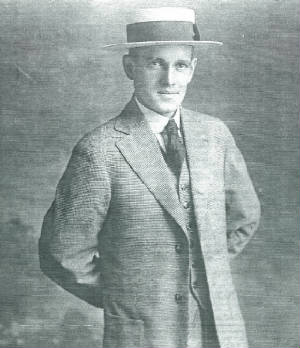
JM: What were the names of your parents?
TL: Thomas Octave Levesque and Annette Simone Brousseau.
JM: Where was your father born?
TL: Boston, Massachusetts.
JM: What were the names of his parents?
TL: Eustache Levesque and Alma (Dumont) Levesque. Eustache worked for Curran and Joyce, a bottling company. When my father was fairly young, he went to work in Boston for a photography studio. He commuted from Lawrence, which was about 25 miles each way.
JM: How long did your father live in Lawrence?
TL: I would say about 20 years or so. My father moved here to Windsor in about 1920, and bought a photography studio. My parents had married in 1919.
JM: How many children did they have?
TL: Nine, five girls and four boys. Two others were stillbirths. I was born in 1927.
JM: How did your father wind up getting the photo studio?
TL: He had asthma and his doctor suggested that he move out in the country. Then his father told him about a photography studio that was for sale in Windsor. He came up and decided to buy it.
JM: Where in Windsor was it located?
TL: The building was torn down. One of the banks is there now. It’s right in the middle of town.
JM: What was the name of the studio?
TL: Brousseau Studio (no relation to his mother, whose maiden name was Brousseau). He changed it to Levesque Studio. He eventually moved up the street a little bit to the Putnam Block (85 Main Street). When he died in 1943, he was still there.
JM: Did he simply sell and develop film, or did he also take pictures?
TL: He also took pictures. He did portraits and framed them. He did wedding pictures and baby pictures, and anything else that customers wanted. They were black and white, but one of my sisters learned to tint them so they looked like color pictures.
JM: Did you graduate from high school?
TL: Yes, Windsor High School, in 1946.
JM: When you were growing up, did you help your father in the studio?
TL: Well, I probably hindered him more than I helped, but I did whatever he wanted. He couldn’t do much physical labor, because of his asthma.
JM: According to his death certificate, he died of a heart attack. Had he been sick for a while?
TL: He was sick his whole life. That winter, he caught cold, and he just wasn’t well enough to weather the cold.
JM: Did his health make it difficult for him to work? Were there times when he couldn’t work? Did it hurt his business?
TL: I never knew him to take off more than half a day.
JM: Where did he and your mother live when they first moved to Windsor?
TL: They lived in some of the company housing down in the area we used to call Warsaw. When Goodyear Manufacturing came in, they tore down all those big blocks that these people were living in and put in a parking lot.
JM: When did they buy the house on Kiniry Street?
TL: About 1927 or 1928, around the year I was born.
JM: When your father died, what kind of an impact did that have on your family?
TL: It was devastating. Up to that time, my mother hardly ever left the house. She had almost no money, and she had to take care of all the house payments and do the grocery shopping. My sister Isabelle worked downtown, so she would do some of the grocery shopping. She gave almost her whole paycheck to my mother. When I worked, I did the same thing. I was working as a plumber’s helper while I was still going to high school. My brother Armand and my brother Leo were in the service when my dad died. They sent home allotments. There was a taxi driver in town that had been a very good friend of my father, and for almost a year, he provided free taxi service for us. His name was Dan Goodell.
When I graduated, I went into the Navy. When I got out, I attended the University of Vermont for two years, and then I got married, and worked for a plumbing company. In 1953, I went into the plumbing business for myself. I did that for about 30 years. When my son Mike got out of the Navy, he came to work for me, and when I retired, he took over.
JM: What was your father like?
TL: He loved a good story. He played the violin. He would play old French songs. One of my sisters also played the violin, and one of my brothers played the guitar, so they would have jam sessions.
JM: Was your father always busy with his work, or did you have time to do things together?
TL: He had quite a bit of spare time. He had a nice garden, and I helped him with that. But it was tough on him to work in the garden, because it aggravated his breathing problems.
JM: Did your father speak French a lot?
TL: Only when he spoke to my mother, and when he didn’t want us to hear what he said. When my oldest brother started school, he couldn’t speak English. My parents were really embarrassed about that, so that’s when they started speaking only English.
JM: Did any of your brothers and sisters go to college?
TL: Leo went to business school in Manchester, New Hampshire. Robert, my youngest brother, was in the service and came out with the GI Bill. He went to the University of Florida and got a degree in electrical engineering. He spent most of his life working for the Navy. Armand stayed in Windsor and worked for the post office, and finally became the postmaster. Two of my sisters moved to Boise, Idaho.
JM: What’s it like to live all of your life in the house you were born in?
TL: It’s kind of unique. I always liked the house. Quite a few years after my dad died, my mother sold the house and followed my sisters out to Boise. My wife didn’t want to stay in the house, because she thought it was too big. So we didn’t buy it. We rented a house elsewhere in town. About two years later, I read in the paper that it was for sale again, so we decided to buy it.
JM: When did your mother die?
TL: She died in Boise on July 19, 1980.
JM: What do you think about the picture of your father at the mill? Did you know he did that at a young age?
TL: I never knew it, but I’ve heard many stories about child labor in the mills. It made me realize what a rough life he had.
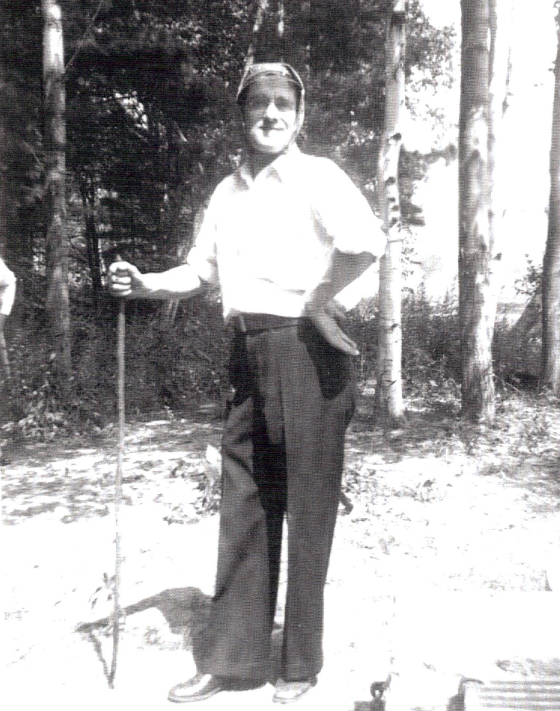
“My father was quite a character. We were on a picnic in a state park, probably about 1938. He was posed with a bandana in his hair. He looked like he was saying, ‘Well, here I am.’
“He told me that when he was commuting to Boston, he and his friend would get on the train first thing in the morning, and then one of them would yawn. Then the other would yawn. And pretty quick, other people on the train would be yawning. It got to be quite a joke, until the other passengers finally realized what they were doing.”
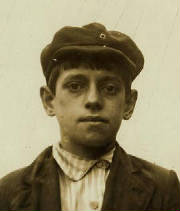

Thomas Levesque, the son, passed away eight months after I interviewed him. His son, Peter Levesque, notified me by email. The following is an excerpt from that email.
“My father was a good guy, and he was full of stories. He always spoke of how good a fiddler his father was, and that he used to play the fiddle on his chest and not tucked under his chin. One thing you may not realize is that there were many notable people in our area who chose to have summer places or retirement homes there, and everyone needs a plumber at some point. When I was young, my father’s plumbing shop was run from the old barn at the house, and the office was in a small room just inside our back door. Many people back then preferred to pay in person, so there always seemed to be someone at the house paying a bill or contracting a job to be done. J.D. Salinger, the author, was a frequent visitor, as was the artist Jared French. When father was an apprentice, he put in a new bathroom for artist Maxfield Parrish. Other notable customers were artist George Tooker, actor Charles Bronson, TV producer Sheldon Leonard, and writer and illustrator Ilse Bischoff. In my youth I got to meet more famous folk than many do in a lifetime. I was lucky to have him as a father and will miss him greatly. He is at peace now, and I am glad that he was able to share some stories with you before he left.”
Thomas Levesque and Wilfred Valliere, the two boys in the Hine photograph, lived across the street from one another, and were probably friends. They had a curious thing in common. Thomas’s father ran a soda beverage bottling company. When Wilfred grew up, he also had a soda beverage bottling company. It’s likely that they would have competed for customers.
Photo of Thomas G. Levesque courtesy of Nathan Larson. © 250 People Project: www.250people.com
The story of Wilfred Valliere is also on this site.
*Story published in 2012.
